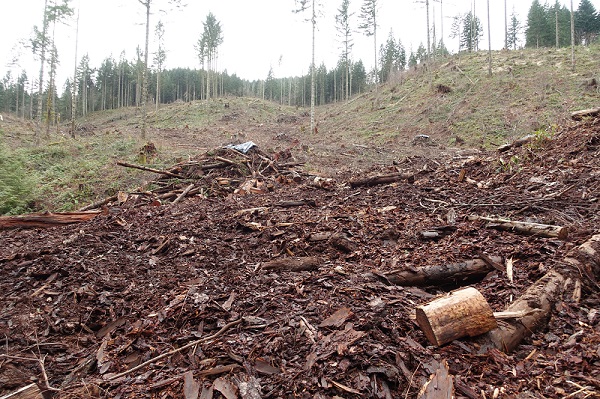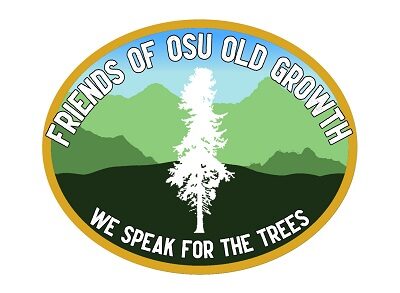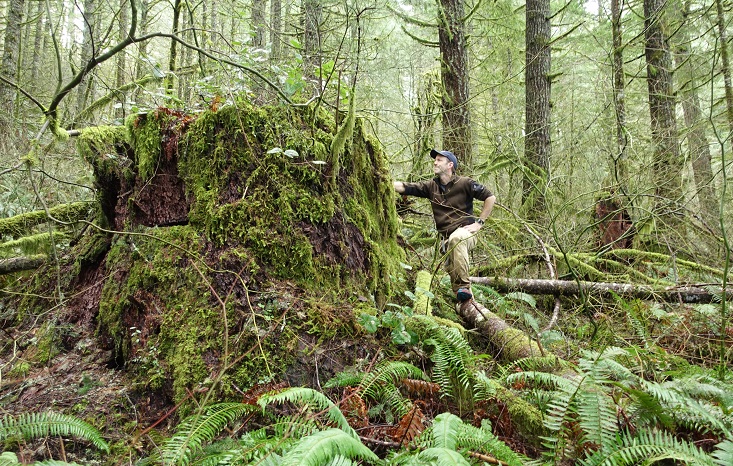
I’ve been exploring OSU’s McDonald-Dunn Research Forests for over three decades, but am still discovering hidden gems. On a recent nighttime adventure, I chanced upon the ghostly remains of what was once a remarkable old-growth forest. Dozens of large stumps, some 6 to 8 feet in diameter, litter the steep hillside. Giant logs, cut and left behind generations ago, form a criss-cross maze in this moist and mossy world. Steady rain, thick fog, and the whistling of wind in the tree tops added to the sense of mystery. With the beam of my flashlight as a guide, I crawled through the thick brush, making my way up to the top of the ridge. The earthy aromas and lush vegetation filled my senses with a rejuvenating calm. This is truly a magical place – one can only imagine how amazing it was before the ancient forest was cut.
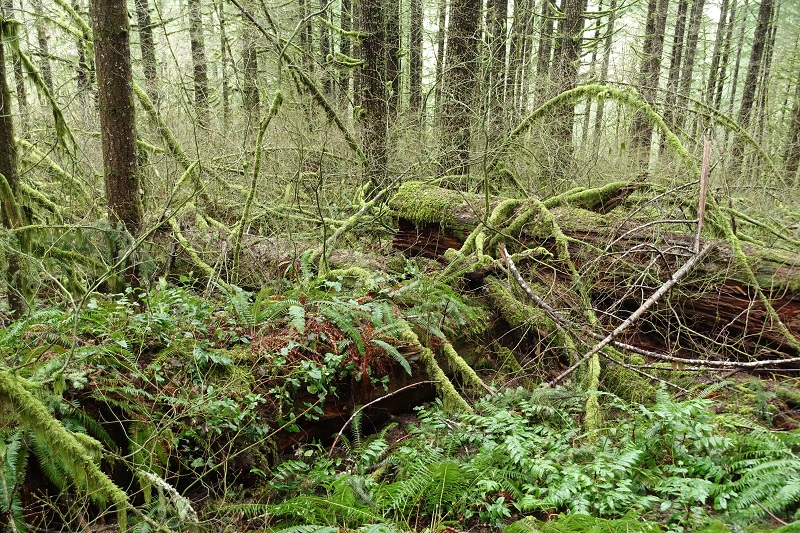
On my descent, I came upon a huge, dark, trunk looming in front of me. I assumed it had to be a snag (a standing, dead tree), given all the old stumps I had already seen. As I got closer and shone my light into the night sky, I was amazed to see a healthy crown towering far above. The complex canopy, deeply furrowed bark, and large trunk (over 6 feet in diameter) suggest it is perhaps half a millennium old. It was truly astounding to stumble upon this ancient giant hidden in the dark.
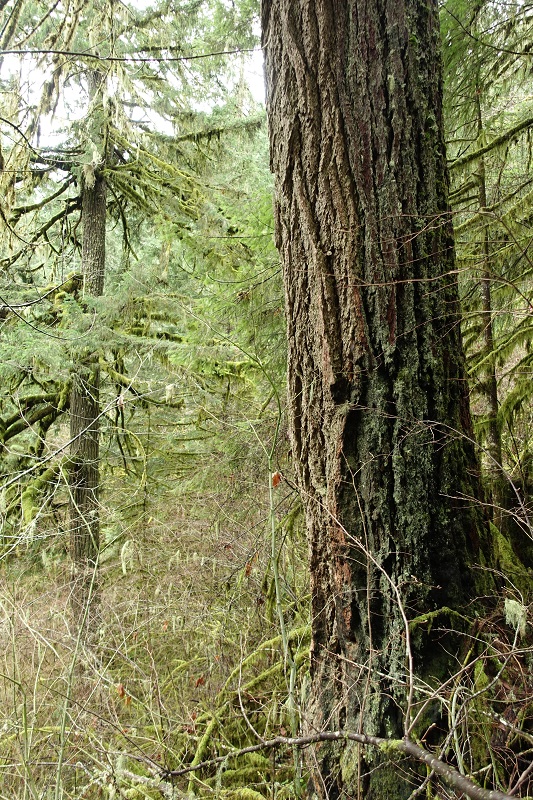
When I later returned to this section of forest to explore it in the daylight, I was amazed and gratified to discover a number of other old-growth trees. Perhaps a dozen giant Douglas firs are scattered across an area of forest covering roughly 20 acres. I wondered why previous generations of loggers chose to spare these giants long before stewardship of the forest came to OSU. Old-growth yews and maples, and numerous snags and down logs add to the richness of this ecosystem. It has the look and feel of an old-growth forest, even though the majority of the trees are much younger.
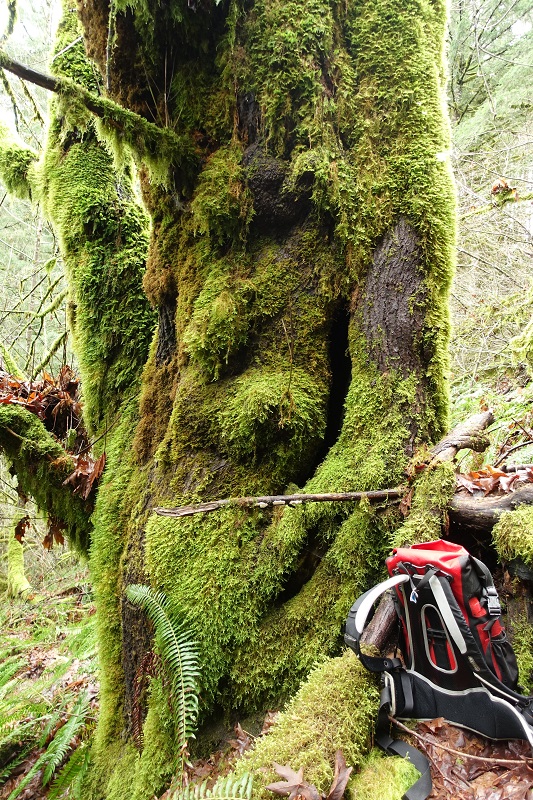
This remnant of ancient forest ought to be one of OSU’s highest conservation priorities. The significant number of old trees, down logs, and thick layer of vegetation make it a prime candidate for ecological research – and also store enormous amounts of carbon (providing an important buffer against climate change). The Dean and his staff ought to develop a plan for restoring areas like this back to the old-growth forests that used to be here. There is so much ecological diversity and beauty already present. With a strong commitment for preservation and a few generations of time, the “ghost forest” would come back to life.
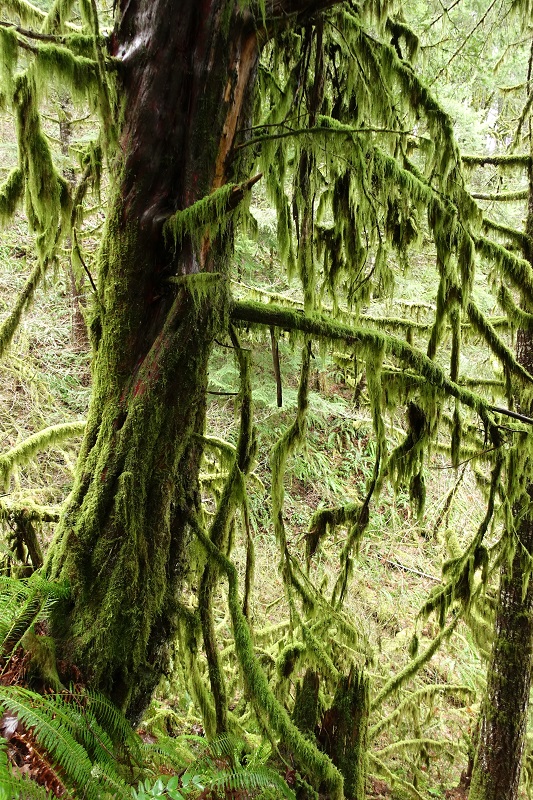
Unfortunately, under the current management plan of the Research Forests, this section of forest is available for harvest. It is not included in the ~3% of the Research Forests that is currently protected. In July of 2019, the Interim Dean placed a temporary moratorium on cutting trees over 160 years of age, so the older trees will likely be spared. But the 160-year limit is a temporary restriction that will be superseded by the next Research Forest management plan. Even with a robust plan, OSU’s “Forest Executive Committee” has the power to make exceptions. They could decide this entire section of forest has to be cut for any number of reasons they deem important (without any input or recourse by citizens).
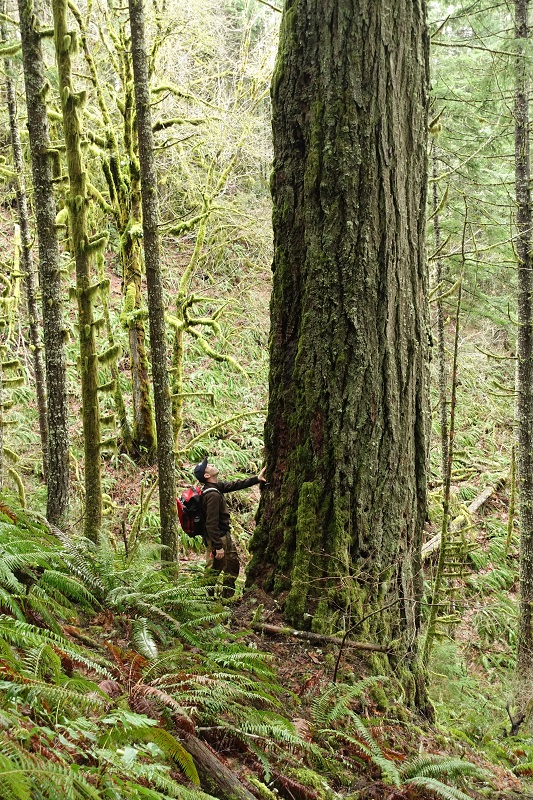
Unless the new forest plan prioritizes preservation of these special ecosystems, it is only a matter of time before we see them on OSU’s harvest schedule. One can easily imagine the result by looking at recent cuts in the McDonald Research Forest.
